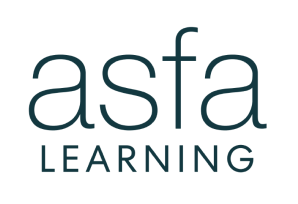21 March 2023
Australian retirees face accelerating price pressures
The latest ASFA Retirement Standard highlights the impact of high inflation on household budgets, as the cost of funding a comfortable retirement leapt 7.5 per cent in just 12 months.
High food, fuel, travel and electricity prices drove up the cost of retirement for a fourth consecutive time in the December quarter. Couples aged around 65 now need $69,691 per year to achieve a comfortable retirement, and $49,462 for singles, after both retiree budgets rose another 2.5 per cent in the final three months of the year.
“Unfortunately, Australians continue to face sharp price increases for essential goods and services,” said ASFA CEO, Dr Martin Fahy.
Over the five quarters from September 2021 to December 2022, the Consumer Price Index (CPI), the key measure of inflation, has increased by an average of 1.8 per cent per quarter. This rate of inflation is far higher than the historical average of 0.6 per cent per quarter (since the early 1990s, when RBA inflation-targeting began).
“Additionally, for retiree households, falling real wages have meant that the Age Pension payments have not benefitted from adjustments linked to wage increases.”
These ongoing pressures on retiree budgets have caused a related lift in the superannuation lump sums that ASFA estimates are needed, at age 67, to fund either a modest or comfortable retirement out to the age of 92.
The lump sum ASFA calculates is needed for a comfortable retirement assumes that wages will grow at a higher rate than CPI, which has generally been the case. However, over the last few years growth in prices has outstripped wages and thus an adjustment to the lump sum is required. ASFA calculates the lump sum needed for a comfortable single retirement has increased about 9 per cent from $545,000 to $595,000, and about 7.8 per cent for a comfortable couple retirement from $640,000 to $690,000. The details of the lump sum adjustment are explained below.
“While recent price increases have particularly impacted on the currently retired, the legislated 12% SG (Superannuation Guarantee) will support the majority of Australians building adequate superannuation savings across their working lives to face future retirement costs with confidence,” concluded Dr Fahy.
A recent ASFA survey of consumers demonstrates that the ASFA Retirement Standard well reflects the Australian community expectation of retirement spending. The majority of respondents consider they would need annual expenditure consistent with, or exceeding, the ASFA Comfortable budgets to maintain their desired living standard in retirement.
ASFA modelling finds that the cost of SG on paid parental leave would be approximately $200M and this measure needs to be prioritised in the upcoming Federal Budget.
Detail on changes to the budgets
The percentage increases in the budgets for those aged around 65 were higher than the quarterly increase in the December quarter All Groups CPI of 1.9 per cent, but slightly lower than the annual change of 7.8 per cent.
Retirement budgets for those aged around 85 were up by around 2.3 per cent at the comfortable level and around 2.0 per cent at the modest level from the previous quarter.
Retirees have faced significant price increases over the last four quarters for non-discretionary items such as food, electricity and automotive fuel. Costs of domestic and international travel are also up substantially.
Spending categories showing some of the largest annual price increases were as follows:
- Food rose by 9.2%
- Bread 13.4%
- Meat and seafoods 8.2%
- Milk 17.9%
- Oils and fats 20.8%
- Gas 17.4%
- Electricity 11.7%
- Household appliances 10.2%
- Automotive fuel 13.2%
- Domestic travel and accommodation 19.8%
- International travel and accommodation 15.9%
View the detailed budget breakdowns here.
The adjustment process for the Retirement Standard budget estimates
ASFA’s detailed expenditure budgets are updated every quarter in line with CPI price movements for the various categories of expenditure that make up the overall budgets. This ensures their continued relevance, especially when significant price increases are occurring in the economy.
More infrequently (generally every 6 or 7 years) the budgets are revised to reflect changes in spending habits (such as increased use of mobile phones and the internet by older Australians, increased expenditure on streaming services and sharp drops in DVD purchase or video rental) and more general movements in community living standards. Both quantities and types of goods and services are adjusted.
This adjustment process is in line with what is recommended by numerous academics for the development and maintenance of Budget Standards.
In addition, the lump sum amounts are adjusted when there are significant changes to the budget amounts and/or in response to changes in the Age Pension means test. Movements in the real value of the Age Pension relative to movement in the CPI also are relevant to calculating the lump sum amounts. The stability over the previous few years in the ASFA estimates of lump sum amounts reflected the assumption that in the future, wages would grow faster than prices, leading to an increase in the Age Pension in real terms over time. Unfortunately, this has not occurred in recent years, leading to the necessity to revisit the lump sum amounts.
Calculation of lump sum balances in superannuation required to support ASFA Modest and Comfortable
The lump sum figures needed to achieve the Modest and Comfortable retirement standard calculated by ASFA assume that retirement occurs at age 67 and that the lump sum will be fully spent by age 92. The calculations also assume that the Age Pension will be received in line with eligibility based on the decreasing superannuation balance held over the course of retirement and that there will be investment earnings along the way.
As noted above, amongst other things the calculations assume that the Age Pension will increase over the medium to longer term by more than the increase in the CPI. This is because the Age Pension is increased by the greater of the increase in wages or relevant CPI indices. However, in recent years there has been no real increase in the Age Pension as growth in prices has been greater than the increase in average wages. This has implications for the previously calculated lump sum amounts.
The high rate of inflation over the last year has substantially raised the amount of spending required to achieve either ASFA Modest or ASFA Comfortable. While the rate of inflation may ease going forward, the costs of either a modest or comfortable retirement have been permanently ratcheted up by recent developments in living costs.
More specifically, Australia has been experiencing a period of elevated inflation over the past year or so. Initially, this largely reflected global factors; supply constraints for manufactured goods following disruptions to production and shipping during the 2020 COVID crisis, and higher global energy and grain prices following Russia’s invasion of Ukraine in early 2022. While, in general, global pressures have been dissipating and prices are off their peaks, domestic inflationary pressure has been building. In large part this reflects Australia’s strong recovery from the COVID crisis and the associated emergence of domestic capacity constraints – particularly for a range of household and personal services.
Over the five quarters from September 2021 to December 2022, the Consumer Price Index (CPI) increased by an average of 1.8 per cent per quarter. This rate of inflation is far higher than the historical average of 0.6 per cent per quarter (since the early 1990s, when RBA inflation-targeting began).
This higher rate of price growth means that price levels will be permanently higher (than otherwise would have been the case). While it is certainly the case that some prices will fall from current elevated levels (such as for imported household goods and for energy), this will not be the case for all consumer prices – particularly for services. In broad terms, it is expected that around two-thirds of the impact of higher inflation will be permanently reflected in a higher (aggregate) price level.
The previous time lump sums were increased was in August 2015 when the lump sum for the Comfortable standard was set at $545,000 for a single person and $640,000 for a couple.
Movements in relevant indicators since August 2015:
- Age Pension (to March 2023): 24.5%
- Lump sum for Comfortable (March 2023): 9.2%
- ASFA Retirement Standard Comfortable Expenditure (increase to December 2022): 18.6%
- CPI (to December 2022): 21.1%
It is in this context ASFA has adjusted upwards by a modest amount (compared to the movement in the Age Pension and in the Retirement Standard expenditure) its estimates of lump sums required at age 67*. As well, the ASFA Retirement Standard expenditure amount increased by less than the CPI over the period concerned due to there being differences in the expenditure bundles of the Retirement Standard and the CPI. For instance, the Retirement Standard budgets gives a relatively low weight to home ownership and no allocation at all to education and childcare.
Investment returns alone are not enough going forward to bridge the gap between the Age Pension received and the required expenditure to support the Comfortable standard.
*The calculations are based on the current level of required expenditures by singles and couples and then use a spreadsheet to goal seek the required lump sum amounts needed to support that level of expenditure. Assumptions are made in regard to future investment returns and also in regard to future movements in prices and wages, with the latter impacting on adjustments to the Age Pension in the medium to long term.
For further information, please contact:
ASFA Media team, 0451 949 300.
About ASFA
ASFA is the peak policy, research and advocacy body for Australia’s superannuation industry. It is a not-for-profit, sector-neutral, and non-party political, national organisation. ASFA’s mission is to continuously improve the superannuation system, so all Australians can enjoy a comfortable and dignified retirement.


